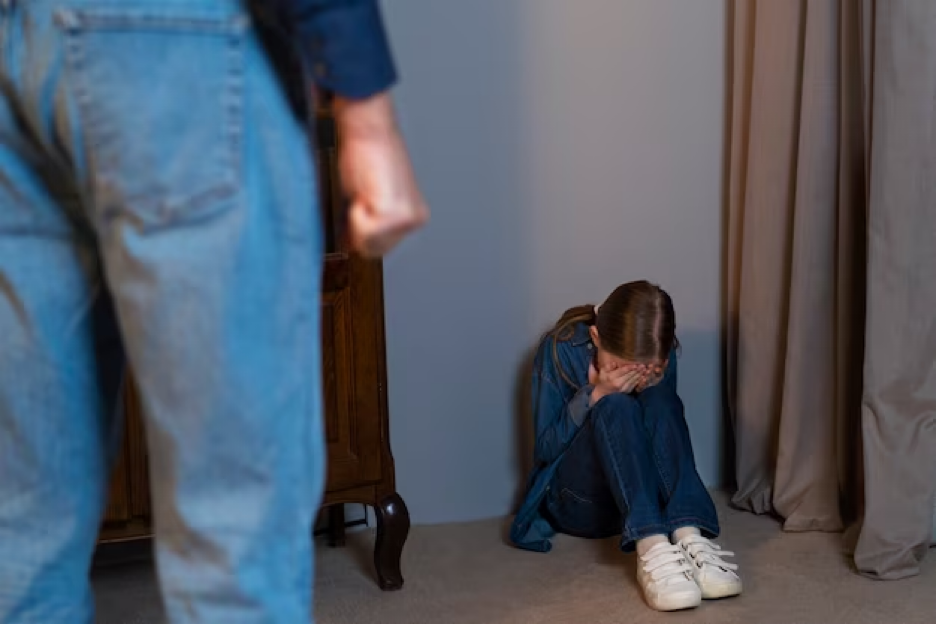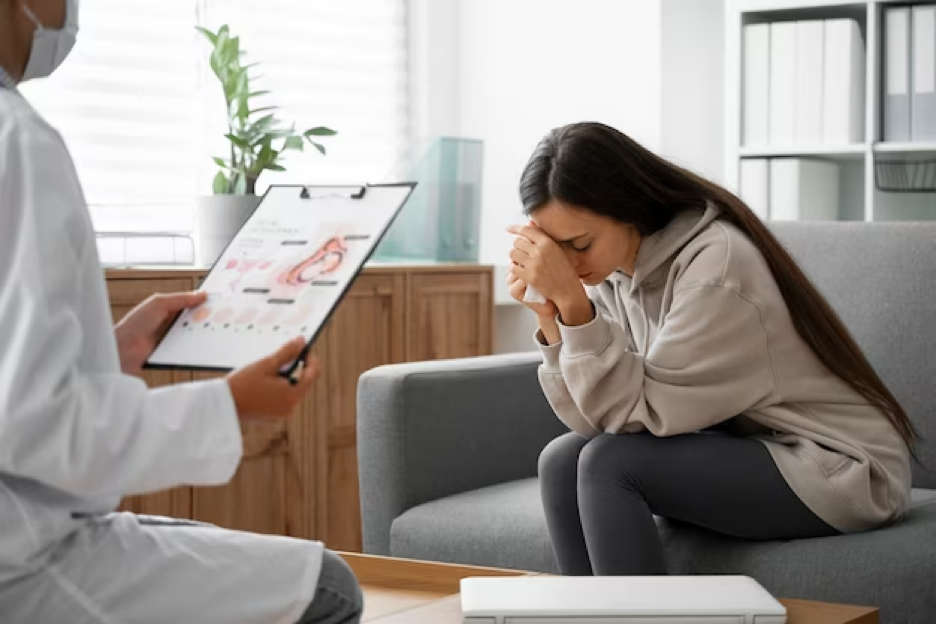Life can be a whirlwind of experiences, some leaving a lasting impact that reverberates deep
within. One such profound effect is Post-Traumatic Stress Disorder (PTSD), a complex condition that can cast shadows on one’s thoughts, emotions, and overall well-being.
But fear not, for within the depths of understanding, compassion, and effective treatments lie the keys to unlock the path towards healing and reclaiming one’s life.
In this article, we’re going on a journey to learn more about PTSD. We’ll dive into what causes it, the signs and symptoms to watch out for, and the different treatments available to kick its butt and get you back on track.
What is Post-Traumatic Stress Disorder (PTSD)?

Post-Traumatic Stress Disorder (PTSD) is a mental health condition that can happen after going through something really tough or traumatic. We’re talking about stuff like natural disasters, serious accidents, physical or sexual assault, combat experiences, or even witnessing violence. The important thing to know is that PTSD doesn’t discriminate – it can affect anyone, regardless of their age, gender, or background.
Causes of PTSD

PTSD can be triggered by a wide range of traumatic events that deeply impact a person’s sense of safety and well-being. These events can vary from person to person and can have different levels of severity. Here are some common causes of PTSD:
Personal Trauma
Experiencing a traumatic event personally, such as physical or sexual assault, a serious accident, a natural disaster, or a life-threatening situation, can lead to the development of PTSD. These events can shatter a person’s sense of security and leave lasting emotional scars.
Witnessing Trauma
It’s not only direct personal experiences that can cause PTSD. Witnessing a traumatic event happening to someone else, such as a loved one being harmed or a violent incident, can also have a profound impact on an individual’s mental well-being. The emotional distress and helplessness felt during such events can contribute to the development of PTSD.
Military Combat
Military personnel who have been exposed to combat situations, where they face the constant threat of injury or death, are at a higher risk of developing PTSD. The intense and prolonged stress experienced during combat can leave lasting psychological effects.
Childhood Trauma
Traumatic experiences during childhood, such as physical or sexual abuse, neglect, or living in a dysfunctional and unstable environment, can significantly increase the risk of developing PTSD later in life. Children are particularly vulnerable to the effects of trauma, and the emotional wounds can persist into adulthood.
Occupational Exposure
Certain professions, such as first responders (police officers, firefighters, paramedics), healthcare workers, and military personnel, are regularly exposed to traumatic events as part of their job. Continuous exposure to distressing situations can increase the likelihood of developing PTSD.
Multiple or Prolonged Traumatic Experiences
Experiencing multiple traumatic events or enduring a prolonged period of trauma, such as in cases of ongoing abuse or captivity, can increase the risk of developing PTSD. The cumulative effect of repeated traumas can have a profound impact on an individual’s mental health.
It’s important to note that not everyone who experiences a traumatic event will develop PTSD. Individual factors, such as genetic predisposition, personal resilience, and the availability of social support, can influence how a person responds to trauma. Additionally, the severity and duration of the trauma can also play a role in the likelihood of developing PTSD.
Common Symptoms of PTSD
There are four main categories we’re looking at. First, there are the re-experiencing symptoms. This means you might have intrusive thoughts, nightmares, or flashbacks about the traumatic event. Then there are the avoidance symptoms, where you try to steer clear of anything that reminds you of what happened.
Negative changes in your mood and thinking can happen too, like feeling guilty, ashamed, or having trouble remembering parts of the trauma. And lastly, there are the hyperarousal symptoms, which can include being easily startled, always on edge, or struggling with sleep.
Risks of Having PTSD

Here are some risk factors that can increase the likelihood of developing PTSD:
- Previous Mental Health Issues: Individuals who have a history of mental health conditions, such as depression, anxiety disorders, or previous experiences with trauma, may be more susceptible to developing PTSD. These pre-existing conditions can make it more challenging to cope with the aftermath of a traumatic event.
- Lack of Social Support: Having a strong support system of friends, family, and loved ones can be a protective factor against the development of PTSD. Conversely, individuals who lack a solid support network may face a higher risk of developing the disorder. Social support is crucial in helping individuals process their experiences, manage emotions, and find comfort in times of distress.
- Childhood Trauma: Experiencing trauma during childhood, such as physical, emotional, or sexual abuse, neglect, or living in a chaotic and unstable environment, can increase the vulnerability to developing PTSD later in life. Childhood trauma can have long-lasting effects on mental health and coping mechanisms, making individuals more susceptible to the impact of subsequent traumas.
- High Levels of Stress: Ongoing stressors in life, such as financial difficulties, relationship problems, work-related stress, or other significant life changes, can weaken a person’s resilience and increase the risk of developing PTSD. Chronic stress can make it more challenging to cope with traumatic events and can exacerbate the impact of trauma on mental health.
- Lack of Coping Skills: Individuals who have limited coping skills or have not developed healthy ways of managing stress may be more vulnerable to developing PTSD. Effective coping mechanisms, such as problem-solving skills, emotional regulation techniques, social support utilisation, and self-care practices, can help mitigate the impact of trauma and promote resilience.
- Severity and Duration of Trauma: The intensity, duration, and proximity to the traumatic event can influence the risk of developing PTSD. Traumatic events that are more severe, life-threatening, or prolonged may have a higher likelihood of causing psychological trauma and subsequent PTSD.
- Biological Factors: Genetic variations can influence how individuals process and respond to traumatic events. At the same time, imbalances in neurotransmitters, such as serotonin and norepinephrine, can affect mood regulation and stress response, potentially increasing the risk of PTSD.
- Gender: Research suggests that women may be more prone to developing PTSD compared to men. This could be due to a combination of factors, including differences in hormonal regulation, societal expectations, and the types of trauma typically experienced by women.
How is PTSD Diagnosed?
When diagnosing PTSD, mental health professionals refer to specific diagnostic criteria outlined in the Diagnostic and Statistical Manual of Mental Disorders (DSM-5). These criteria include the following elements:
Exposure to Trauma
To meet the diagnostic criteria for PTSD, an individual must have been exposed to a traumatic event. This can include directly experiencing the traumatic event, witnessing it happening to others, or learning about a traumatic event that occurred to a close family member or friend.
Intrusive Symptoms
People with PTSD often experience intrusive symptoms related to the traumatic event. These symptoms can manifest as distressing and involuntary memories, flashbacks, nightmares, or intense psychological or physiological reactions when exposed to reminders of the trauma. Intrusive symptoms can disrupt daily life and cause significant distress.
Avoidance and Numbing
Individuals with PTSD may engage in avoidance behaviours to manage distressing thoughts, memories, or reminders associated with the trauma. They may avoid places, activities, people, or conversations that trigger these distressing recollections.
Additionally, individuals may experience emotional numbing, feeling detached or emotionally distant from others and losing interest in previously enjoyed activities.
Negative Changes in Thoughts and Mood
PTSD can lead to negative changes in an individual’s thoughts, beliefs, and emotional well-being. This may include persistent negative thoughts about oneself, others, or the world, distorted blame or guilt related to the traumatic event, feelings of detachment from others, diminished interest in activities, and a persistent inability to experience positive emotions.
Hyperarousal and Reactivity
Hyperarousal symptoms are characteristic of PTSD and can include being easily startled, having a heightened startle response, having difficulty sleeping, experiencing irritability or anger outbursts, and displaying hypervigilance or an exaggerated sense of alertness. These symptoms can make it challenging to relax and can significantly impact daily functioning.
Duration and Functional Impairment
The symptoms of PTSD must persist for more than one month to meet the diagnostic criteria. The duration of symptoms is an essential factor in distinguishing between acute stress reactions and PTSD. Additionally, the symptoms must cause significant distress or impairment in social, occupational, or other important areas of functioning.
Treatment Options for PTSD

Psychotherapy
One common approach is through therapy. There are different types out there, but some focus specifically on trauma. They help you process what happened, manage tough feelings and thoughts, and develop healthier ways of coping.
Medications
Sometimes, medications can be used alongside therapy to help with PTSD symptoms. They’re often prescribed to help with things like depression, anxiety, and that constant feeling of being on edge. The specific medication prescribed will depend on your individual needs.
Self-Help and Coping Strategies
In addition to therapy and medications, there are also things you can do on your own to help manage PTSD symptoms. Regular exercise, practising relaxation techniques like deep breathing or meditation, taking care of your physical health, and reaching out to supportive friends and family can all make a big difference.
Seeking Help and Support for PTSD
Knowing when to reach out for professional help is important. If you or someone you know is dealing with PTSD symptoms that have been going on for more than a month and are really impacting daily life, it’s a good idea to talk to a mental health professional. They’re trained to diagnose and treat PTSD effectively.
Remember, you don’t have to go through this alone. Support from loved ones, friends, or even support groups can be incredibly helpful. Having people who understand and are there for you can make a big difference in your journey to healing.
Conclusion
To wrap it up, Post-Traumatic Stress Disorder (PTSD) is a mental health condition that can happen after going through or witnessing a traumatic event. It can affect anyone, and there are various symptoms that can show up.
But the good news is that there are treatment options available, like therapy and medications, along with self-help strategies. And don’t forget, seeking professional help and having support from others is so important. With the right support and resources, it’s possible to manage PTSD and work towards a healthier and happier life.


